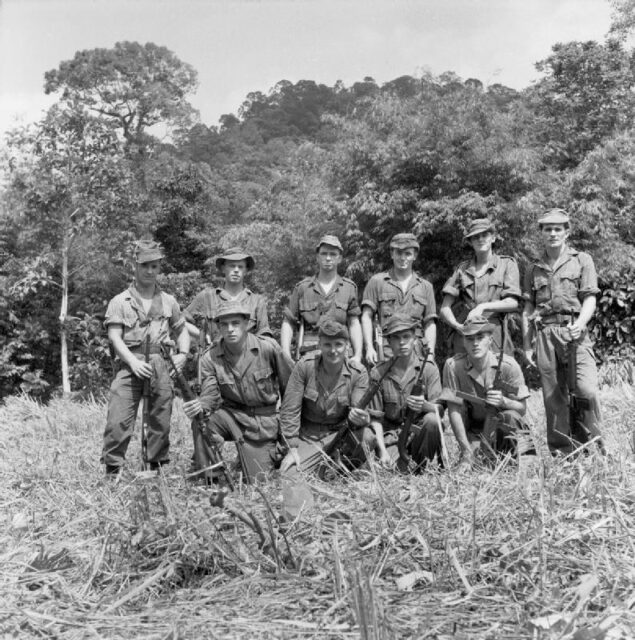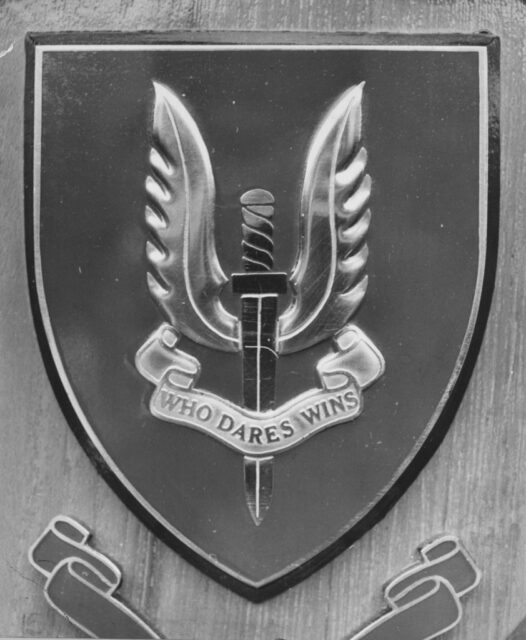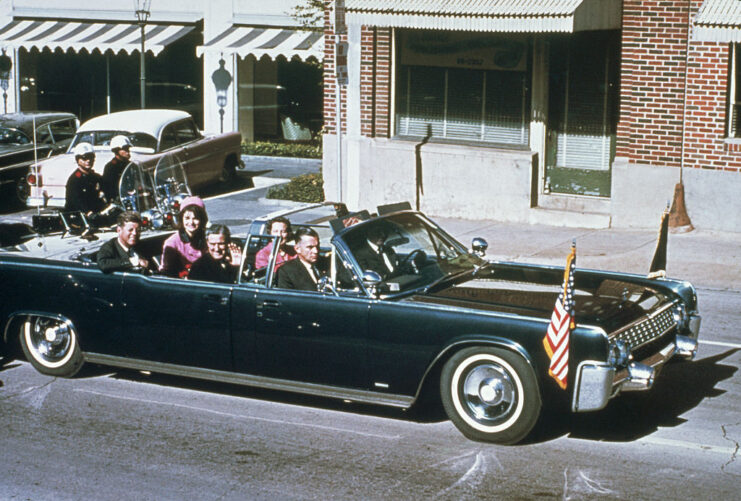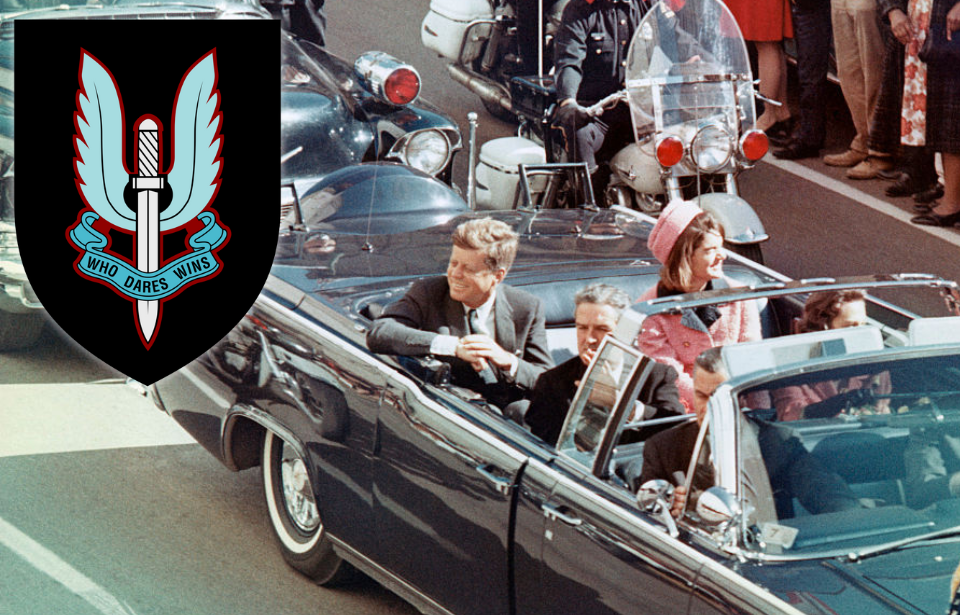Every great event has unexpected side effects. However glorious or terrible, each will trigger other moments – good or bad, small or significant. After the assassination of US President John F. Kennedy, one of these effects took place half a world away, turning an elite, yet obscure British military unit into an institution with worldwide influence.
What did the Special Air Service (SAS) look like in 1963?

Founded in 1941, the Special Air Service (SAS) was an elite British regiment created to carry out irregular operations during the Second World War. Disbanded at the end of the conflict, it was reformed in 1947.
The SAS’s role during the Cold War world wasn’t initially well defined. Its troops were deployed in successful operations across Asia, most notably in Malaysia, where operatives fought a grueling jungle war against Communist rebels, while going on to win over local support in a hearts and minds campaign.
The SAS wasn’t yet well established. It hadn’t earned the high public profile it would gain in the 1980s, and some senior figures in the British Army were dubious about this band of misfits. It boasted unusual operating procedures and troops who judged officers by their actions, rather than their rank and authority.
A small unit that had already been disbanded once, the cost of the SAS meant its future was far from secure.
Shockwaves from Dallas, Texas

On November 22, 1963, the sound of shots echoed through the air above a lively crowd in Dallas, Texas. John F. Kennedy, the 35th president of the United States, was slumped in his limousine, dead. The assassination of the country’s glamorous, young leader was one of the most shocking events in American history.
This shock was felt around the globe. If the leader of one of the most powerful countries could be assassinated, nobody was safe. From elected prime ministers to hereditary monarchs, leaders urgently looked at the conditions of their own protection details.
Until 1962, only the US and the Soviet Union offered bodyguard training to their allies. As a result, many Western-aligned leaders were protected by individuals trained by the Americans, but the US president had just been shot, raising doubts about the nation’s approach to security. As such, international leaders started looking for a new source of bodyguard training.
Special Air Service (SAS) begins offering close protection

The Special Air Service established close protection training during the Cold War. Instead of using an established approach, it created one from scratch, drawing on the organization’s experience in irregular warfare. Troops had done this work from the other side, finding ways to attack well-protected targets, and they turned what they’d learned on its head. They wrote out rules and began a process of constant improvement that allowed them to evolve their techniques down the years.
The SAS’ approach to bodyguard-ing was different from that of the Americans. The US Secret Service valued large numbers of highly visible agents as a deterrent and a barrier around the target. The SAS taught an approach that used smaller groups who were less visibly placed. Its operatives knew from experience that an attacker’s biggest worry wasn’t the guards they could see. Instead, it was the ones they couldn’t.
In the aftermath of JFK’s assassination and an attempted assault on Princess Anne and her husband, Mark Williams, the British Foreign Office and MI6 quickly reached out to friendly world leaders. The United States, which had long overshadowed its trans-Atlantic cousins, had been publicly shown to be vulnerable. The United Kingdom was offering an alternative.
How does intelligence come into play?

A large part of bodyguard work is intelligence gathering. Bodyguards need to understand the places they’ll be with the person they have been tasked with protecting, the routes between those locations and where along the way opportunities to launch attacks will show themselves. They also need to be gathering intelligence in the moment, watching passers-by and identifying threats.
One of the big changes brought by the Special Air Service was to integrate intelligence gathering with bodyguard-ing. As the men and women on the ground, the protectors should do the advanced preparation themselves, to give them a better understanding – partly because the information is gathered by those whose lives are on the line, if it fails.
Special Air Service (SAS) and international relations

The early 1960s and ’70s were a period of waning power for Britain. The Cold War had solidified a lesson from World War II: the nation, while influential, was now a second-tier global power, behind the United States and the Soviet Union. Pressure from within and other international leaders was forcing the country to give up its colonies, restoring freedom to nations that had spent decades or even centuries under British rule.
Bodyguard training from the Special Air Service provided an inexpensive, yet key tool for maintaining Britain’s influence. It became a favor the Foreign Office could offer leaders across the United Kingdom’s former colonies and throughout politically sensitive regions, such as the Middle East.
The success of the SAS’ operatives ensured a steady stream of business and, with it, diplomatic coups for the Foreign Office. They were tools used to improve relations with Kenya in the aftermath of its bitterly contested independence, and they also allowed the UK to garner influence with the Shah of Iran.
JFK’s assassination secured the Special Air Service’s (SAS) future

In a difficult time, the Special Air Service’s role in bodyguard training gave the military organization a vital and important place in United Kingdom’s diplomatic toolbox. It ensured favor with politicians at home and abroad, making it much more simply a team of secretive Commandos.
More from us: The True Story Behind the Cold War’s Most Iconic Photograph
Want War History Online‘s content sent directly to your inbox? Sign up for our newsletter here!
That dark day in Dallas had forever shaped the future of the SAS.
